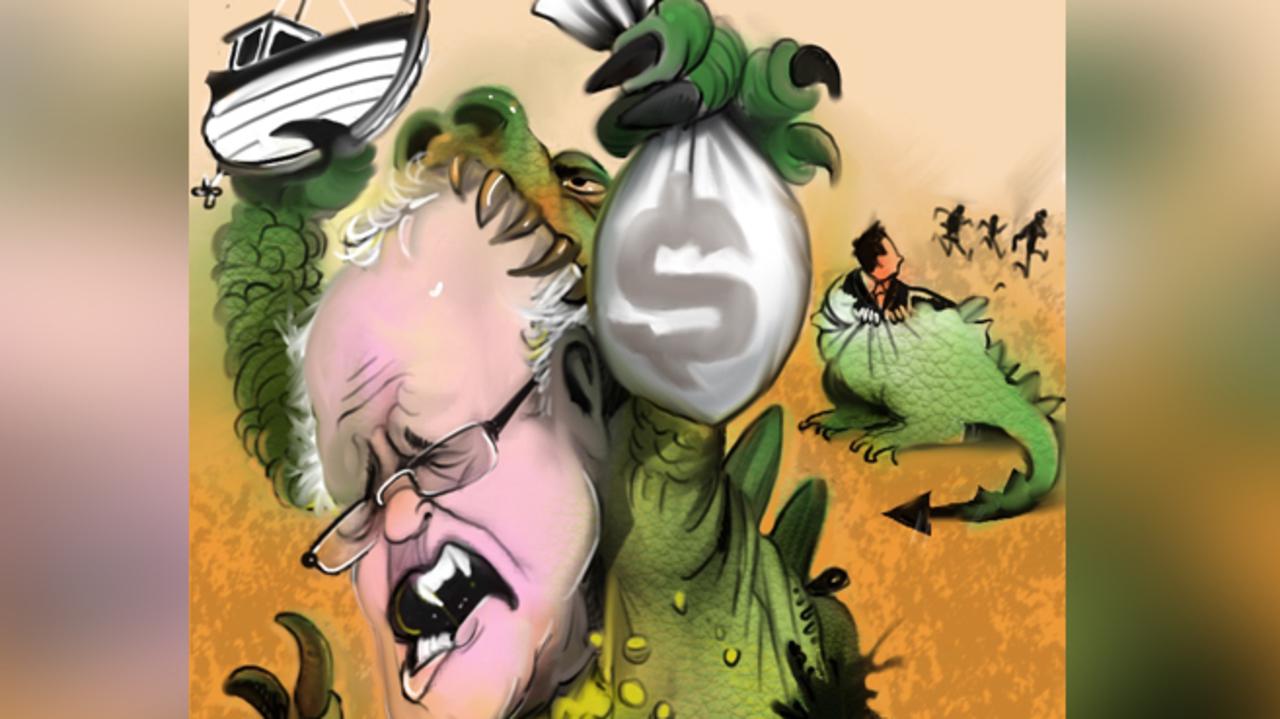Life’s cruellest challenges still no reason to die

We all want a peaceful, painless death. If we could order it up, we would go to bed one night at a ripe old age and not wake up. A few lucky ones do.
It’s understandable most polls tell us about 90 per cent favour voluntary euthanasia. Some even link same-sex marriage and voluntary euthanasia: if politicians are prepared to bend to popular will on one, then they should on the other.
But the issues are similar only inasmuch as they send signals to people on their worth to our society. On same-sex marriage it is a positive signal: gay people should also have what the rest of us take for granted. On euthanasia the signal, perhaps not deliberate but certainly subliminal, is highly negative: that somehow we value people less.
I used to be one of the 90 per cent. I explained my conversion to the 10 per cent here in October 2010, the last time there was a semi-serious attempt at this debate.
There are much more serious attempts now to enact voluntary euthanasia, so I am reprising what I said then in the hope that politicians are mindful of the sort of messages they could be sending to people who have had to battle illness from birth and against all odds and expectations survive.
It is in the hope that enough of them stand up in federal and state parliaments to speak for vulnerable people unable to speak for themselves, or for those who have had to fight for every breath, who have defied predictions of experts and fear what could happen to them if the frameworks around the medical and political systems designed to protect them are eroded.
I once joked that when baby boomers reached retirement age there would be nothing voluntary about euthanasia. It was a smart alec comment designed to highlight the burden the growing number of elderly would impose on the budget, and what would be the likely response of the government of the day.
I stopped making that joke and I stopped supporting legalised voluntary euthanasia after my sister Christina took me gently to task. She was born with one terminal illness, which required hospital treatment from three months, and it led to a second terminal illness that claimed her at just 43.
She was in and out of hospitals all her life, spending days or weeks at a time in care. She knew more about her treatment than most medical staff, and she knew more about medical staff and the way hospitals were run than most would want to.
There were brilliant doctors and nurses she respected, but others were monsters. As in every profession, there were capable, compassionate people; others could be incompetent, or unthinking, or cruel.
Christina knew first-hand the struggle faced every day by people born with treatable chronic illnesses that in all probability will kill them. She worried about the message, subliminal or overt, that voluntary euthanasia legislation would send to patients and medical staff about the worth of people with lifelong illnesses and the value of treating people who could not be cured.
Would there be, even subconsciously and because of the pressures on the system, a diminution of care for, or interest in, treating the seriously ill or disabled? How much effort should go into helping people who could not be fixed? And would the patients feel pressured to avoid care because of the burden they felt they had become? She and others like her thought about these issues constantly.
There were times I thought Christina was a little paranoid. After all, the excellent care she had been receiving in Melbourne hospitals — that and her incredible will — had helped keep her alive when she was supposed to have died in infancy, then in her teens, then in her early 20s.
I stopped thinking that, too, after she had been diagnosed with liver cancer, brought on by decades of blood transfusions to treat thalassemia major.
The doctor who diagnosed her told her it was all over and to seek palliative care.
But she had been fighting all her life, in the face of regular predictions from doctors that she was about to die.
Doctors at Melbourne’s Austin Hospital were willing to treat her despite the first doctor’s referral letter telling them in effect not to bother. As a result of their efforts, her life was extended a little.
Towards the end the head of palliative care at another leading hospital told her, in my presence, that if she began bleeding at home, maybe it would be best if she did not bother calling an ambulance.
She told him that of course she would, and what did he expect her to do, just lie there and bleed to death? It was traumatic and instructive.
Not all medical staff, even those who are supposedly specialists in the field, are equipped to deal with the dying.
In any case, far too many Australians kill themselves already. Young indigenous people. Young white people. Older people of all races and all religions. They find all sorts of ways to do it, and even people to help them do it if they can’t do it themselves.
Do we really need governments to sanction or arrange it?



To join the conversation, please log in. Don't have an account? Register
Join the conversation, you are commenting as Logout